Historical Kona Heritage Corridor
- Up-Country Kona is A Charming Amalgamation of True Old Hawaii and Whimsical Counter Culture Weirdness--All With Stunning Views of the Ocean: Photo by Donnie MacGowan
When the Kona Coast becomes too hot and humid upon a torrid afternoon, or post-littoral torpor sets in from sunbathing overindulgence at the beach, visitor's to the Big Island Kona side should take a cue from locals and head up-country for the fresh, cool afternoon air. The Old Road, a 12 mile long remnant of the Mamalahoa Highway, runs through a beautiful slice of Old Hawai'i; coffee farms, fruit orchards, historical buildings, small towns and an old sugar mill grace the sunny slopes of Hualalai Volcano here.
Mauka, or Up-Country, Kona as this area is called, was once the beating financial heart of Hawai'i Island-along this road were built the first newspaper press, bottling company and telephone exchange on Hawai'i. Today, the road runs through the artist enclave of Holualoa, famed for its art galleries and coffeehouses. Sweeping views of the Kona coastline, the upper slopes of Hualalai Volcano and even Maui on vog-free days, make this road a trip a not to be missed treat. Let's take a quick tour of the section of the Kona Heritage Corridor that runs along Highway 180 from it's intersection with Highway 190 north through Holualoa, past the intersection with Highway 19 and into the town of Kainaliu.
M. Onizuka Store
Starting at the intersection of the Mamalahoa Highway (Hwy 180) and Highway 190 (Palani Road) and heading approximately South on the Mamalahoa Highway, one passes through tropical to temperate rainforest and comes to the verge of the cloud forest that softens the upper slopes of Hualalai Volcano. At about the 7 mile maker one passes the old M. Onizuka Store, the boyhood home of Astronaut Elisson Onizuka, who died in the Challenger space shuttle disaster. The M. Onizuka Store was founded in 1933 by Masamitsu Onizuka in 1933 who provided the residents of his community with general merchandise and means of transporting their purchases through the store's one-man taxi service. Following her husband's death, Mitsue Nagata Onizuka continued to run the store until the day she died in 1990. "May Peace On Earth Prevail" proclaims the post outside the residence where Elisson Onizuka, who had the honor of being the first astronaut of Japanese-American descent, grew up. History buffs are invited to explore Hawai'i's rich involvement in man's exploration of space at the Onizuka Space Museum at Kona International Airport.
K. Komo Store
Boasting but a few necessary concessions to the march of time, the charming comfort of the family store of yesteryear lives on in the form of the K. Komo Store. Gasoline, sundries and good conversation are always available at this for real slice of "Old Hawai'i". Serving the people of Keopu since the early 1900's, and operated by the third generation of Komo family, K. Komo Store still grows, roasts, brews and sells their own brand of coffee. The store is registered on the National Register of Historic Places.
Holualoa Town
With a name that means "the long sled track", its position at the apex of Kona coffee country and its modern day eclectic profusion of art galleries, schools and studios, it's easy to see that Holualoa, once the bustling center of North Kona commerce, has been through some changes in the past 200 years. Initially, Hawai'ians grew taro and sweet potato in small family farm plots called "kuleana" around Holualoa. It is interesting to note that today the word "kuleana" in Hawai'ian pidgin has taken on the meaning of "personal responsibility". In any case, early in the nineteenth century, Japanese, Portuguese and Chinese immigrants settled here and began planting large fields of oranges, breadfruit, coffee and cotton among other crops. A large sisal plantation for making ropes for sailing vessels was located just northwest of Holualoa...today, now-wild sisal plants, looking a bit alien with their tall, single stalk of blossoms, can be seen in profusion along Palani Road between Kailua and Kealekehe. Early in the 20th century the fields were turned over almost entirely to sugar production and Holualoa became the financial center of the Kona District. Luther Aungst established the Kona Telephone Co here in the 1890s, the first regional newspaper The Kona Echo was established at Holualoa by Dr. Harvey Hayashi, one of Kona's first full time resident doctors. Many other schools, churches and industries, including the Kona Bottling Works, located here in the first half of the 20th century, but the collapse of the sugar industry brought financial doom that coffee growing only partially staved off. The community shrank drastically in population and commercial importance and by 1958 only about 1000 people lived in the Holualoa area. In a dreamy, upcountry Kona backwater, a community of artists, recluses, writers and seekers of the "Old Hawai'i Lifestyle" thrived here. Recently, an infusion of money from the newly invigorated "boutique coffee" industry has sparked a revival of commercial life in Holualoa, anchored in coffeehouses and art galleries.
Kona Sugar Company and West Hawai'i Railway Company
Such was the seductive lure of easy riches to be gained by growing sugar in Hawai'i at the beginning of the 20th Century, that investment capital for a large sugar plantation, sugar mill and railroad in Kona could be raised not once, but three times. The Kona Sugar Company plantation was established in 1899 and every available scrap of land was stripped of whatever crops had grown there previously and planted in cane. Although the sugar grew well enough above about 500 feet elevation, a notable lack of fresh water in Kona's semi-arid landscape made Wai'aha Stream the only logical choice for the mill site. Unfortunately, the stream flow is vastly insufficient for year-round cane milling and the mill, built in 1901, went broke in 1903. Kona Sugar was bought by investors; renamed Kona Development Company, the plantation again went broke in 1916 and was in turn bought by investors in Tokyo. This group managed to eek out a profit until the industry imploded in 1926. Originally planned to run 30 miles, the railroad was only built to total length of 11 miles in the 27 years of sugar plantation operation. Work camps, communal baths, stables, workshops and all the requisite infrastructure of a giant agricultural plantation lay abandoned in the Mauka Kona countryside. During World War II, the U.S. Army used the mill site as a training camp to acclimate troops to warfare on their way to the tropical Pacific Theater. Fearing the tall smokestack of the mill would act as an artillery landmark for any invading forces, the Army pulled it down and Kona lost one of its first post-contact, industrial landmarks. Traces of the rail bed can still be seen from the top of Nani Kailua and Aloha Kona residential neighborhoods. Located just west of the town of Holualoa along Hualalai Road (the major intersection just south of town), near the intersection with Hienaloli Road, are impressive stone breastworks and trestles for the railroad. Built by hand but still strong today, the rail bed can be explored and hiked from here. Further up Hienaloli Road from the intersection with Hualalai Road, the old mill site remnants are still visible.
Keauhou Store
Originally Sasaki Store, Keauhou Store was founded by noted carpenter, coffee farmer and prominent local business man Yoshisuki Sasaki in 1919, and remains one of the great neighborhood stores of Kona. Run most recently by Yoshiuki's son, Rikiyo, they once offered gas, sundries, fresh coffee and local produce; today, however, the Keauhou Store stands closed by the roadway, as traffic that used to pass by the front door now travels the makai highway. However, the front porch of Keauhou Store still serves as a gathering place for local coffee farmers and neighborhood children. A true remnant of Old Kona, Keauhou Store is worth a visit, especially to history buffs and photographers.Tong Wo Tong Cemetery
Although Chinese have lived in the Islands since the turn of the 19th Century, the first large scale immigration of Chinese came when they were brought over to work the cane fields in 1852. There was soon a burgeoning population of Chinese field workers and shopkeepers; by 1860 Chinese outnumbered Caucasians in Hawai'i. This community established the Tong Wo Tong Cemetery to honor their ancestors and commissioned Yoshisuki Sasaki, a noted local carpenter and prominent business man, to build the ornate gate in 1902. In English and Chinese the inscription on the gate reads "Tong Wo Tong Cemetery".
Daifukuji Soto Mission
This Buddhist Temple has served the Mauka Kona community as a site for worship and retreat since opening on May 27, 1921. Reverend Kaiseki Kodama, who, since founding the first Kona Soto Mission in 1914, for years had held services at Hanato Store and other sites, planned the original mission building which was designed and built by Yoshisuki Sasakai. Reverend Hosokawa opened a Japanese Language School here in 1926; the school, living quarters and social hall all enlarged upon the original structure. The traditional Japanese music and dance-filled O Bon Festival is held here each July; visitors are welcome.
Lanakila Church/Kaona Uprising
Lanakila Church was the beginning and focal point for one of the strangest and more interesting episodes in Mauka Kona history during the latter half of the 19th Century. This, the last church built by the ubiquitous Reverend John D. Paris, was finished in 1867. Lanakila Church is still today a vibrantly strong, active parish of Congregationalists. The quiet country setting of this church gives little indication that it was in the center of a violent, deadly uprising in the late 1860s. Called the Kaona Uprising, the events of 1867 and 1868 comprised a perhaps natural reaction of the native Hawai'ians to having been so recently, and completely, dispossessed of their way of life, their naturist religion and their ancient traditions. The uprising started peaceably enough; in 1867 a man named Kaona introduced himself to the Reverend Paris, saying he had a great quantity of Hawai'ian Bibles he wished to distribute and asked permission to store them in the as-yet-unfinished Lanakila Church building. The Church elders assented and the Bibles were stored. However, Kaona and his followers tried to usurp the church building and its land for living space and at the pleas of Reverend Paris the Governor, Princess Ke'elikolani, eventually evicted them. Kaona moved his growing group of malcontents onto a neighbor's property until rain and cold forced them to seek warmer lands downslope by the ocean. Growing more powerful with each new cult member, Kaona resisted the efforts of the local law enforcement, in the person of Sheriff Neville, to evict them, reportedly spitting on and destroying the first eviction order. Preaching Hellfire and Brimstone, and aided considerably by a rash of large earthquakes early in 1868, Kaona convinced his followers that he was the only true Prophet of God and that the earthquakes would destroy all but his most loyal followers. Sensing a mood of violence, Sheriff Neville determined to use force if necessary to evict Kaona and his band from their squatter's camp. In the ensuing melee, Neville and one native policeman were killed. Kaona then whipped his band into a religious frenzy of blood lust, exhorting them to go forth, slay the white people and set fire to their farms and homes. Such was the violence and threat that the South Kona Magistrate organized a volunteer militia to for the protection of citizens, but the uprising wasn't put down until the Steamer Kilauea brought troops from Honolulu to round up the violent mob several days later. Kaona was sentenced to 20 years imprisonment but was later pardoned and freed by King Kalakaua. He died a free man in Kona in 1883.
Aloha Theater
The Aloha Theater and its cafe, serve as a gathering place for the community and the home of independent, classic and second run films as well as the Hawaiian International Film Festival and various community events. Construction of the Aloha Theater began in 1929 and was finished in 1932, long before Hawai'i was a state. Starting life as a silent movie theater, it survived the changeover to 'talkies' as well as the great fire of 1948 that destroyed much of it's side of town. Still in use today as a performing arts center by the Kona Association for the Performing Arts; their performances feature live music and dance as well as film. The Quonset-hut shaped original theater building and the original marquee still in use are very typical of the style used in other theaters of the plantation era in Hawaii. The Aloha Angel Café associated with the theater is a gustatory revelation and offers a wide-ranging menu of entrees, baked goods and deserts and is open daily for breakfast, lunch, and dinner.
Kainaliu Town
Napping gently on either side of the Hawaii Belt Road, Kainaliu Town is one of the principle commercial centers of Mauka Kona. Kainaliu grew up at the intersection of two donkey tracks which servicee the sugar, coffee and ranching industries, sometime after the construction of Lanakila Church in 1867. The star attraction in Kainaliu is, by far, the Aloha Theater and Aloha Angel Café. This historic and beautiful theater is still the center for stage productions of all kinds as well as cinematic shows; it is the centerpiece for the Kona Association for the Performing Arts (KAPA). Another of the towns interesting attractions is the amazing Oshima Grocery and Dry Goods Store ("If we don't have it, you don't need it"). In addition the town boasts numerous other businesses, galleries, furniture, thrift, herbal medicine shops as well as several wonderful restaurants and coffee houses. Donkey Balls has a candy factory that offers fun tours and tasty samples and Captain Cook Coffee has a roasting house right in town that gives weekday tours. When the weather turns wet in West Hawai'i, or you need a relief from the heat on the beach, a day spent browsing and eating in cool, shady Kainaliu is a real treat.
To celebrate the conclusion of our Historical Soirée, as long as you are in Kainaliu Town, you really ought to stop in for a cup of famous Kona Coffee at any one of a number of local coffee shops...not the harsh sameness of the ubiquitously monotonous Starbuck's, each individually special Kona coffee cafe reflects the personality of the local growers and roasters who produce Kona Coffee, widely held to be the best in all the world. Also, the singular and exclusive galleries and stores in Kainaliu makes erfect shopping for completely unique gifts to take home.
For more information about touring Hawaii in general an exploring the Big Island in particular, please also visit www.tourguidehawaii.com and www.lovingthebigisland.wordpress.com. Information about the author can be found here.
All media copyright 2009 by Donald B. MacGowan
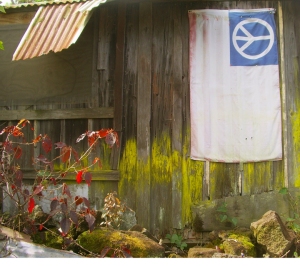
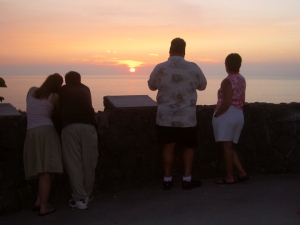
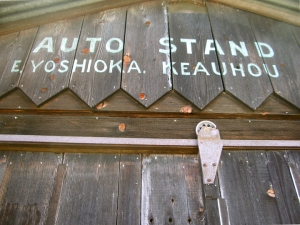
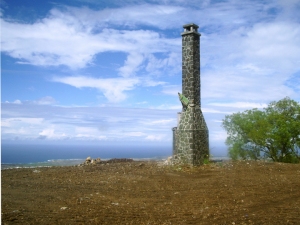
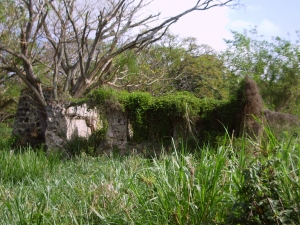
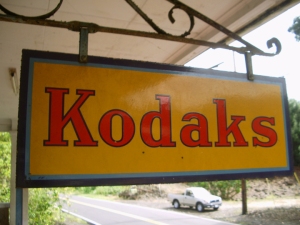
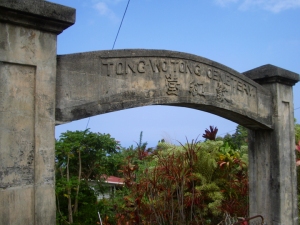
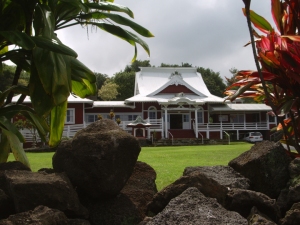
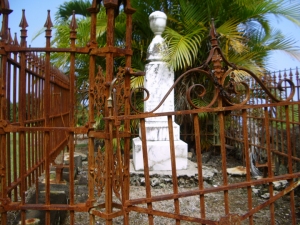
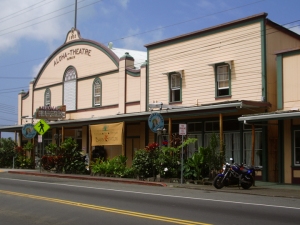
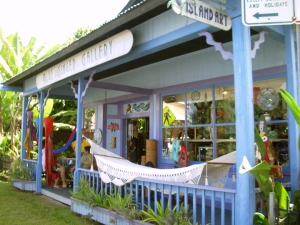
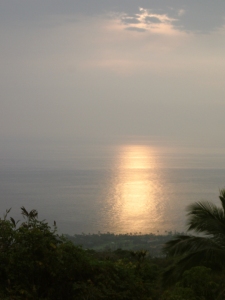

No comments:
Post a Comment